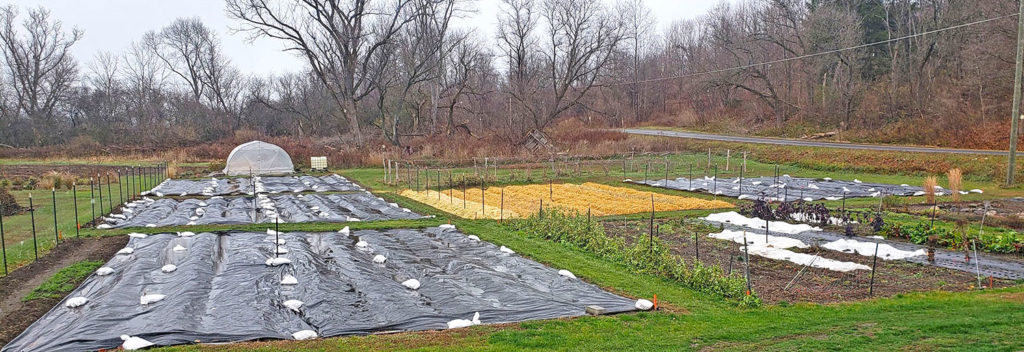Learn About Tarping on Northeast Farms with New Guide
Are you curious about how tarps work? Want to learn from successful practices as well as the challenges and shortcomings?
Our Reduced Tillage project is happy to share a new publication, “Tarping in the Northeast: A Guide for Small Farms,” that provides comprehensive information on the emerging practice of tarping — applying reusable tarps to the soil surface between crops and then removing them prior to planting — for weed and soil management. This guide is intended for both beginning and experienced farmers.
Based on research and farmer experience, the guide covers a range of management practices from using tarps for weed seed depletion, minimal tillage, and cover crop-based no-till, and uses case studies to highlight the methods of farmers across the Northeast. By combining the details of tarp logistics and management alongside the science of the practice, it is designed to support farmers in learning more about tarping and how to implement it to improve soil and weed management on their farm.

Tarps being used to cover beds and being integrated into field planning at Centurion Farm (Locke, NY).
Nina Saeli / Cornell Small Farms Program
Ryan Maher, our Reduced Tillage project specialist, is a co-author on the publication. Maher has led tarping research experiments and worked with farmers to learn how they work and how to use them in reduced and no-till vegetable production.
“Tarps are a really multifunctional tool for small farms that help us get past some of the basic challenges using less tillage,” Maher said. “When we ask farmers how they work, we come up with a long list, then add a few jabs about the logistics. This guide puts all this practical information into one place, highlights successful farmers, and adds what we are learning through applied research, where still have a long way to go to understand what’s happening under there.”
The guide is a product of the NE IPM Working Group on Tarping and Soil Solarization, a project led by Sonja Birthisel at UMaine, that brought together institutions, educators, and farmers across the Northeast region to connect the dots on what was happening with tarping in the Northeast, share resources, identify knowledge gaps and discuss future research directions. The guide was a collaborative effort, authored by Birthisel, Natalie Lounsbury at University of New Hampshire, Jason Lilley at UMaine Extension and Maher.
You can find a link to the guide as well as other tarping resources on the Cornell Small Farms Program’s Reduced Tillage project’s tarping webpage.

